Graham Reid | | 3 min read
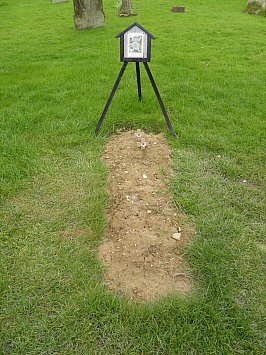
While in Winchelsea in south east England, I went to pay my respects to Spike Milligan at his grave in St Thomas' churchyard. Unfortunately, Spike was out.
More correctly, his famously funny headstone had been taken away – they left Spike down there – because, when his third wife Shelagh Sinclair was buried beside him June 2011, her family wanted her name and dates added to Spike's stone. Milligan's son James from an earlier relationship objected and lead to a bitter family feud.
The headstone – with Shelagh's name and the inscription “May they rest together in perpetual light” – was returned only recently.
Those words seem a bit serious given Milligan's epitaph on his headstone proves you can make people laugh from beyond the grave. It reads “I told you I was ill”. Actually, it doesn't read exactly that because the good burghers of Chichester wouldn't permit it, so Spike's family had it written in Gaelic.
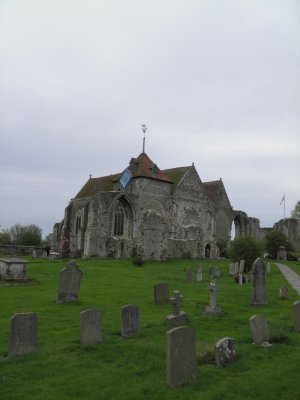 You can see why Milligan wanted to be
buried at St Thomas'.
You can see why Milligan wanted to be
buried at St Thomas'.
It is one of the prettiest churches in the area, its old stones have been worn smooth by the feet of thousands of worshippers over hundreds of years, it boasts magnificent stained glass and trees so old they must have once heard the clash of swords as often as bird call on a gentle breeze.
Winchelsea – which Pre-Raphaelite painter John Everett Millais visited frequently – is also quaint and eccentric.
The narrow streets have no visible names and down winding and narrow Wickham Rock Lane you are lead through an English countryside so beautiful it is a postcard cliché.
Here is an old windmill converted into a recording studio and used by another local, Sir Paul McCartney.
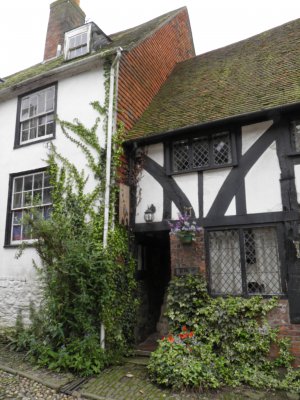 McCartney has a house in the ancient
walled city of Rye nearby – he was Milligan's neighbour – and if
Winchelsea is quietly attractive, Rye is a tourist magnet for its
picturesque streets, odd names on the doors of homes (“The House
Opposite” my favourite) and beautifully restored buildings where
ancient sagging timbers defy a straight line.
McCartney has a house in the ancient
walled city of Rye nearby – he was Milligan's neighbour – and if
Winchelsea is quietly attractive, Rye is a tourist magnet for its
picturesque streets, odd names on the doors of homes (“The House
Opposite” my favourite) and beautifully restored buildings where
ancient sagging timbers defy a straight line.
There are no high-rises in Rye and 75 percent of the quaintly historic homes are under protection orders. With a population of just 4000, Rye inside the old city wall defines the notion of an English country town.
The writer Henry James spent the last two decades of his life in Rye and among his many visitors were Rudyard Kipling, Joseph Conrad and H.G. Wells.
The painter Augustus John was a member of the local Arts Club when James was its president.
This is also 1066 country – local tourism bills itself that way – and nearby is where Anglo-Saxon Britain and Norman Europe collided with appalling consequences. Appropriately-named Battle has grown up beside the site of the Battle of Hastings.
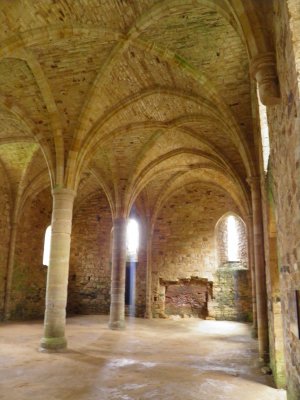 William the Conqueror, who defeated
Harold's army that day in 1066, leveled the nearby hillside and a
Benedictine abbey was built.
William the Conqueror, who defeated
Harold's army that day in 1066, leveled the nearby hillside and a
Benedictine abbey was built.
It became one of the most beautiful and well-endowed in Britain until Henry VIII's reign, during which the monastery and church were destroyed.
Over time it was further abandoned but its impressive remains – empty, silent and solid – allow for contemplation of all that happened here.
On the rolling grassland below two opposing armies – perhaps 10,000 men in all – stood in fatal opposition on October 14. Harold's Anglo-Saxons were weary after their defeat of a Norwegian invasion near York in late September and the 400km march to the south, William's troops – augmented by cavalry and using powerful crossbows, perhaps their first use in conflict on English soil – were fresh.
Even so, the battle lasted some nine hours until the English force, leaderless after Harold's death, fled.
It was peculiar to stand there and think that hundreds of men, hacked brutally or dying from the most horrific wounds, were lying beneath that quiet English field. All in an unmarked grave.
Just like Spike on the day I visited him, come to think of it.
Graham Reid travelled to England
with assistance from Cathay Pacific, VisitEngland and
Visit1066country.
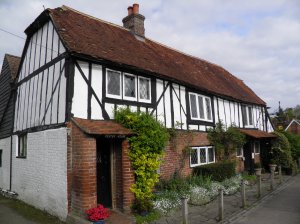 WHERE TO STAY
WHERE TO STAY
In this historic region, Kester House (right) in the country village of Sedlescombe is an easy drive from all of the main sights such as Rye, Winchelsea, Hastings, Battle and Bodiam Castle.
Kester House is a discreetly renovated 16th century home with three private rooms and all modern facilities. It recently won a certificate of excellence from www.tripadvisor.com. For more information see: www.kesterhouse.co.uk
FURTHER INFORMATION
For specific information on this region see www.1066country.com

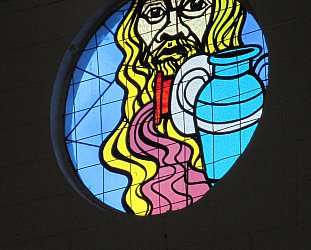
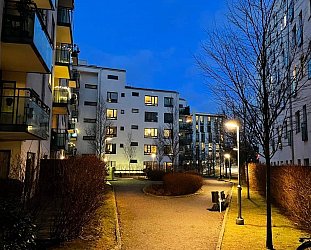
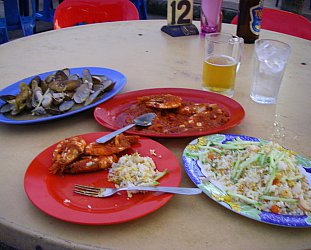

post a comment